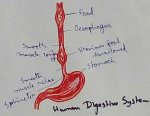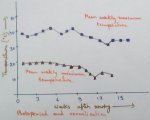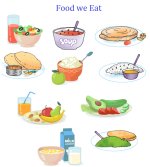Mass of a Substance
How do we measure mass of a substance?
To measure mass we use some weights. These weights are made of iron or brass blocks having a standard mass. In markets or grocer’s shops weights ranging from 5 g to 10 kg are used. In laboratories or gold shops weights used are smaller, ranging between 5 mg and 100 g.
We can use a common balance to measure the mass of an article. The article and the metal weights are placed on two opposite pans of the balance. The quantity of the articles or the quantity of the metal weights is adjusted until the balance earth bar stands still horizontally.
Thus we can determine the mass of an article by comparing it with the total mass of the metal weights.
We can prepare a simple balance on your own. Collect a wooden rod with even diameter. Make three circular grooves, at the middle and two opposite ends of it. Tie a strong thread at the middle groove and hang the rod so that it is perfectly horizontal. Now collect two plastic lids of jars having same size. Make three holes at equal distance along the edge of each lid, lie three threads of equal length at the three holes of the lid. Make a knot taking three free ends of the threads. Prepare another pan in the similar way. Now hang two pans at two ends of the wooden rod with the thread as shown in the figure. Your balance is now ready for use. We can measure the mass of small objects like an eraser, a pen cap or a marble with it., using some coins as weights.
From Mass of a Substance to HOME PAGE
Recent Articles
-
Eleventh Grade | Eleventh Grade Science | Eleventh Grade Math
Jun 27, 25 12:26 AM
Eleventh grade biology has been designed in accordance with the recommended topics. We will cover all the topics in biology very exciting and interesting way. -
Explain Digestion of Food | Salivary Glands | Oesophagus | Stomach
Jun 27, 25 12:20 AM
Before the digestion is start by the different enzymes secreted from the different digestive glands food must be turned and chut or mixed with saliva inside the mouth. -
Explain Human Digestive System | Mouth | Tongue | Pharynx | Teeth
Jun 21, 25 01:15 PM
Digestive system is a system of alimentary canal and digestive glands. Alimentary canal- alimentary canal is a tube of variable diameter having muscular wall and glandular epithelial tissues which sta… -
Vernalisation in Plants | Definition | Mechanism | Devernalization |
Jun 18, 25 01:34 PM
Definition of vernalisation- The change of flowering habit due to the low temperature treatment is known as vernalisation. This is a physiological process which was denoted by Clipart in 1857 invite b… -
The Food We Eat | Food we Get from Plants and Animals | Carbohydrates
Jun 15, 25 03:20 PM
What are the food that we should eat? Find out the names of ten food items in the word maze. Write the names in the correct column of the table given below. Food we get from plants Food we get from an…




New! Comments
Have your say about what you just read! Leave me a comment in the box below.